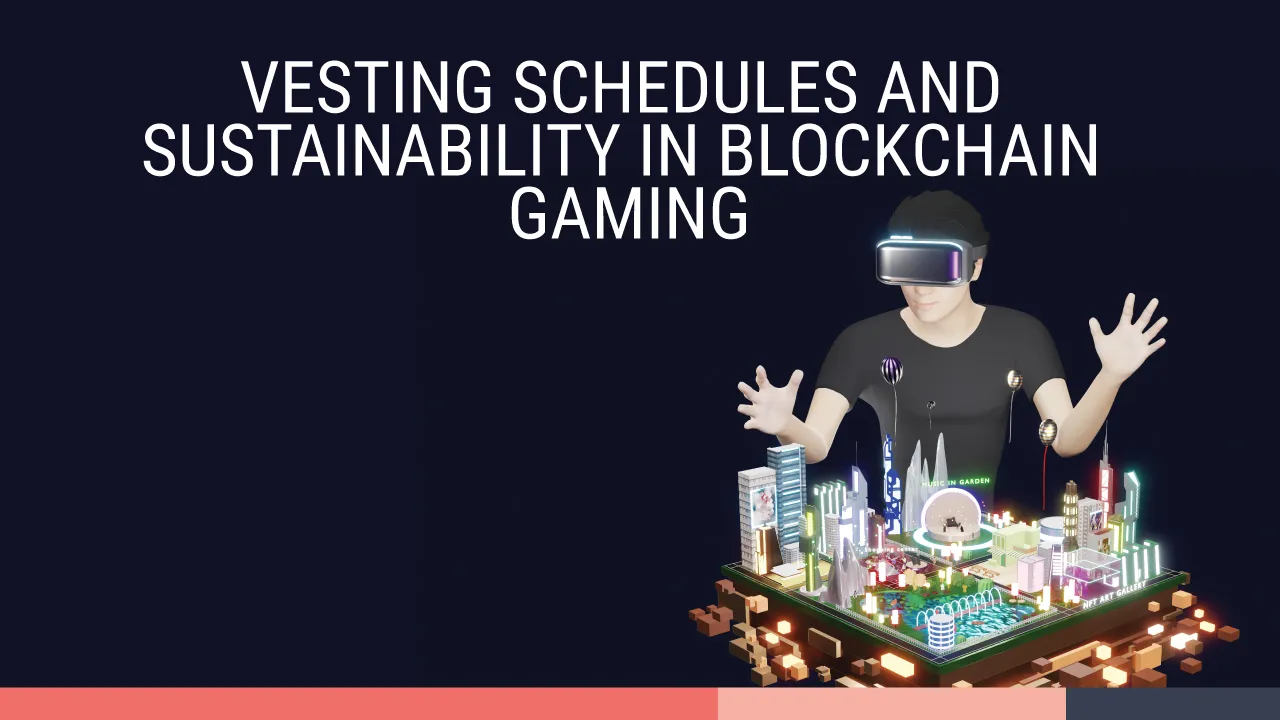Economics Design
Welcome, subscribers! Thank you for subscribing. What will be shared today and the days ahead are alpha from our Economics Design's researchers. Please keep these mails secret and do not share them with any one because these alpha are confidential. Enjoy your reading.
Arguably one of the more important sections of a blockchain game’s whitepaper is the vesting schedule. The vesting schedule contains three key pieces of information: how tokens are going to be released, when they will be released, and to whom. The diagram below is the vesting schedule of the blockchain game Guild of Guardians. Based on the graph we can see a 12-month cliff (period of time where tokens cannot be sold) for investors and developers, followed by linear unlocking. The number of tokens unlocked can be found on the y-axis. The schedule begins on the date of the initial coin offering (ICO).
Guild of Guardians Vesting Schedule
It should be noted that the ICO date is not typically included in the whitepaper, but can be found on platforms like chainbroker.io

These schedules exist to ensure the team and investors are committed to the long-term success of the project. The length of the cliff period and release schedule may differ between games based on the type of game being developed and the level of commitment the team and investors have to the project.
A concerning issue visible in crypto games is the discrepancy between what vesting schedules should be vs what they are in reality. This ties into the long-term sustainability of a project. For example, if we look at the vesting schedule for the $PGX token, the governance token of the game Pegaxy, we see that the initial investors are able to sell 10% of their share of the token at token launch. Furthermore, a three-month cliff, as seen in the release notes, is not indicative of a commitment to a long-term successful game.
“#1 Private Sale 100M – 10% of total tokens – 10% at launch, 3-month lock-in and then a 12-month linear release schedule.”

Source: Pegaxy Whitepaper
Another instance of a vesting schedule not conducive to the long-term success of a project is DeFi Land. This is apparent as there is no lockup period for seed round investors. While there is a linear unlocking every three months for two years, it allows initial investors to take large profits even if it is only a proportion of the tokens they receive. It is crucial both the initial investors and developers are willing to wait an extended period of time before taking a profit to show they believe in the long-term success of the project.

Source: DeFi Land Whitepaper
Potential Solutions:
-
Actively align the lockup period length to the progress made developing the game
A cliff period that is actively based on a game’s development ensures that a team’s financial incentive (their share of tokens) is in alignment with the game’s development. This is especially important as games can take several years to develop and the standard one-year lockup period is not representative of this lengthy process. There are also delays in roadmaps that must be accounted for. One way to tie a cliff period to the game’s development is through a system of milestones. This can be applied to the already existing framework of a game’s roadmap. For example, there could be a number of milestones outlined in the roadmap that must be completed prior to the lockup period ending. This creates a higher level of accountability for the game developers. Some of these milestones could include the alpha-mainnet release, beta-mainnet release, and marketplace release.
-
Align the end of the lock-up period with the full game launch.
The end of the lock-up period could be triggered by the full launch of the game, as this is a simple way to track game progress across all game types. Implementing this system would likely be beneficial for players, although arguably less so for developers and investors, at least in the short term. Incentivizing early cash outs from investors and team members might encourage new teams dedicated to creating sustainable games to build in the space and thus profit in the long term. This may resolve some of the issues of Ponzi games developing and make way for better projects to dominate the space. One potential downside of making the lockup period end at game launch is it might encourage the team to rush, and release an unfinished subpar product, an issue which plagues even ostensibly high quality AAA games like the infamous Cyberpunk 2077 release.
-
Allow token holders to be heard when updating a vesting schedule
One way to potentially change the vesting schedule process is by allowing the game’s token holders to provide governance of the vesting schedule. On-chain governance can provide token holders a say based on the game’s development progress, updates from the developers or the apparent development direction.
Conclusion:
It is crucial that token design mechanisms incentivize long-term sustainability so that players are encouraged to invest both time and money in games without fearing for their assets. Despite some games being developed with a ponzinomic design, many games currently in development aim to accomplish sustainability.
By Ari Kimelman
An article by By Ari Kimelman, Research Assistant at Economics Design
